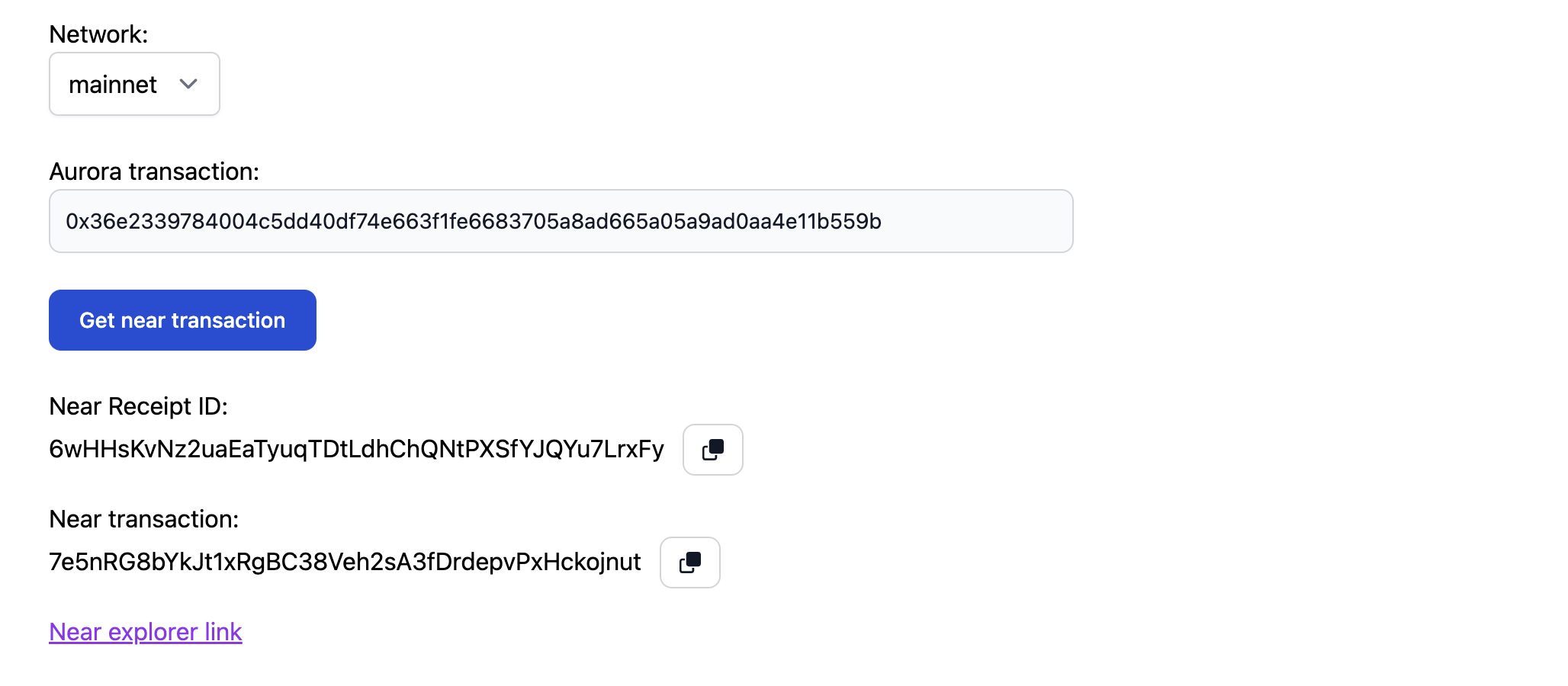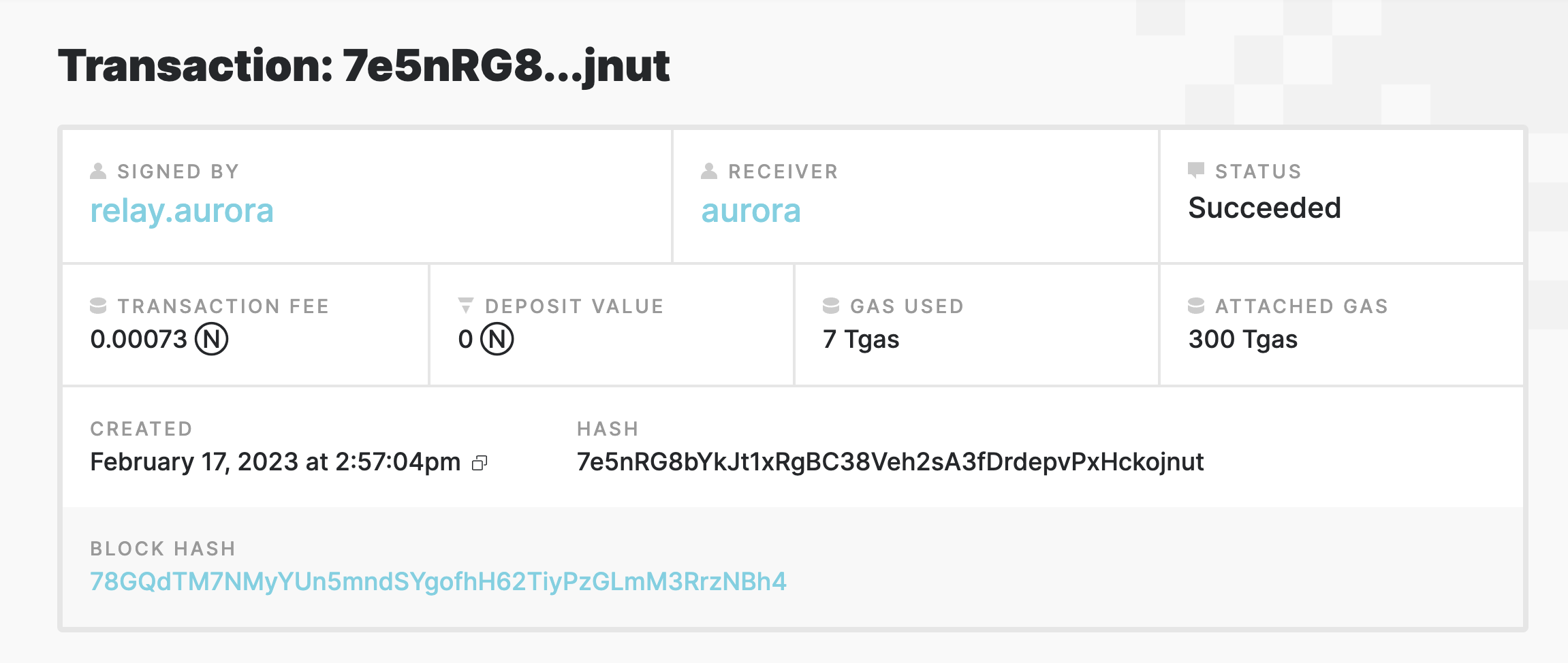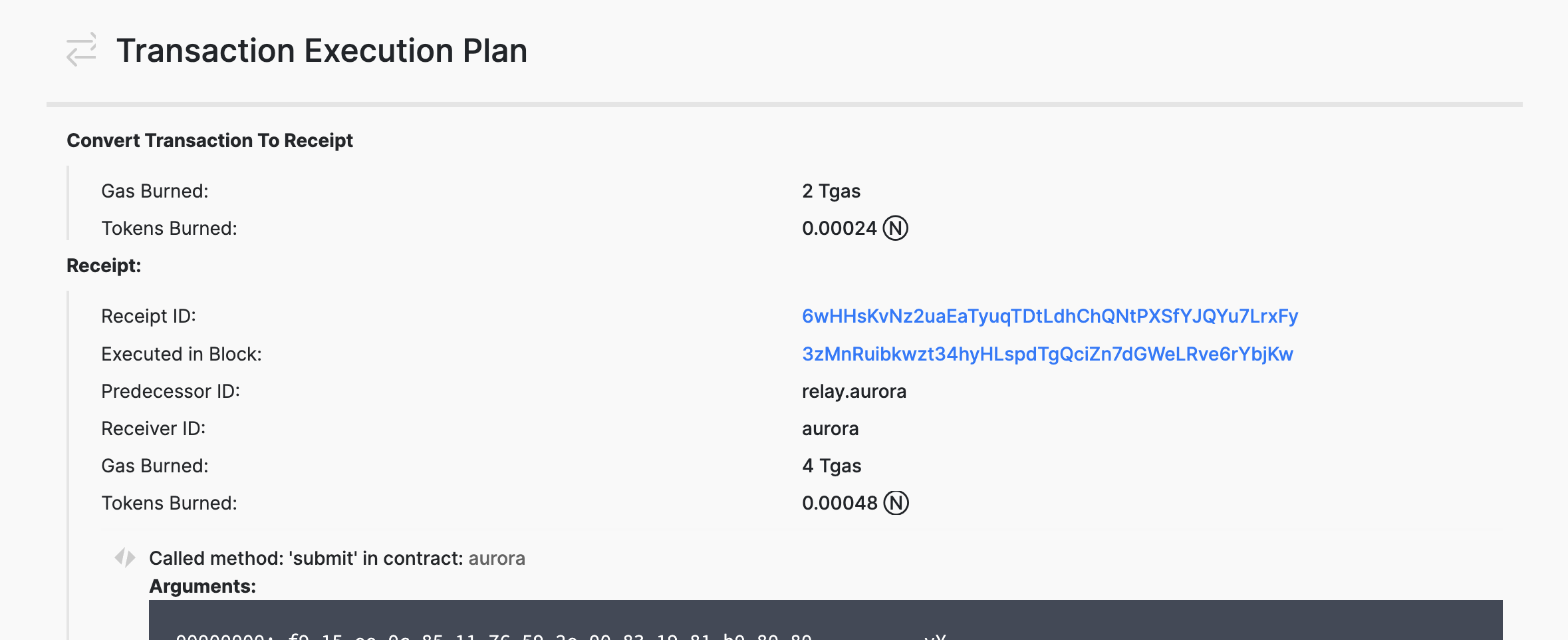How to get NEAR transaction from the Aurora’s one?
In this Tips & Tricks article, we will learn how to get a NEAR transaction hash by having the Aurora transaction's one.
Let's consider some random Aurora transaction for our tests, like this one: 0x36e2339784004c5dd40df74e663f1fe6683705a8ad665a05a9ad0aa4e11b559b.
Aurora Helpers
If you’re not interested in the code-solution, you can take a shortcut and use Aurora Helpers dApp. Go there, paste Aurora’s hash – and you’ll get the result, e.g., for our test transaction, the result will be:

NEAR Receipt: Hex
As developers, we’re eager to know how to get all that information in our code directly without using any third parties. So let’s disentangle that and find out how Aurora Helpers work underneath.
First of all, let’s configure our web3.js provider to be Aurora's mainnet endpoint and set tx variable:
const mainnet = 'https://mainnet.aurora.dev';
const web3 = new Web3(new Web3.providers.HttpProvider(mainnet));
const tx = 0x36e2339784004c5dd40df74e663f1fe6683705a8ad665a05a9ad0aa4e11b559b;
Now, we can get the NEAR transaction receipt by getting Aurora transaction receipt information with the `eth_getTransactionReceipt` EVM call:
const getNearReceipt = async () => {
const res = await web3.eth.getTransactionReceipt(tx);
return res.nearReceiptHash;
};
By calling it, you will get the hex-encoded hash of the NEAR transaction receipt:
0x583237e9ef4d449cd828ff19668baa581a5532591058d3a886af65b80df7e938
NEAR Receipt: Base58
But NEAR hashes should be base58 encoded! And that is what we need to do next – let's add the bs58 library and convert it:
const bs58 = require('bs58');
const getNearReceiptBase58 = async () => {
const receipt = await getNearReceipt();
bufferHex = Buffer.from(receipt.slice(2), "hex");
nearReceiptBase58 = bs58.encode(bufferHex);
return nearReceiptBase58;
};
Then, by calling getNearReceiptBase58 and outputting result to the console, like this: getNearReceiptBase58().then(console.log).
You'll get this result: 6wHHsKvNz2uaEaTyuqTDtLdhChQNtPXSfYJQYu7LrxFy.
NEAR Tx Hash: Using Explorer
At this point, you can go to the NEAR Explorer, enter the receipt, and get your transaction information:

You can check that this is the correct transaction by scrolling down and seeing the corresponding receipt hash in the Transaction Execution Plan section:

NEAR Tx Hash: Using Code
But wait – we want to code this! How do we do it? No problem – we can get a NEAR transaction by sending a call to the NEAR Explorer endpoint with the receipt hash in it. Let's use a promise-based HTTP client called Axios for doing this:
const axios = require('axios');
const nearExplorerEndpoint = 'https://backend-mainnet-1713.onrender.com/trpc/utils.search?batch=1';
const getNearTxHash = async () => {
const nearReceipt = await getNearReceiptBase58();
const payload = {
0: {
value: nearReceipt,
},
}
const response = await axios.post(nearExplorerEndpoint, payload);
const transactionHash = response?.data[0]?.result?.data?.transactionHash;
return transactionHash;
}
As you can see, you need to dig into the response result a little bit (in line 11), but we have already done that for you. By running this last script, you will get the final result which is:
7e5nRG8bYkJt1xRgBC38Veh2sA3fDrdepvPxHckojnut
Conclusion
We've discovered today how to convert Aurora transactions into the corresponding NEAR transactions in 3 different ways (AuroraHelpers, Code+Explorer, Plain Code).
By retrieving a NEAR transaction hash, you can now access all of the associated NEAR information behind it. It could be useful, for example, to understand how an Aurora Rainbow Bridge transaction or Aurora Engine works underneath. But that is the matter for the future articles to come!
I hope you have enjoyed this short tutorial! Leave any questions or comments below. See you next time!
